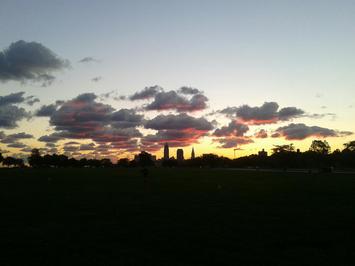
For work, I got two jobs. I am an academic at Cleveland State that focuses on the issues of city building, and I am a Co-Founder in an analytics company called Rust Belt Analytica that develops algorithms and corresponding technology to help cities build better. There’s a bit of a difference between the two — one a little more mission-focused and the other a little more method-. But that is neither here nor there for now. The fact of the matter is the focus of my work: city building, with a particular emphasis on how cities come to live and die. The posterchild of that paradigm is a geographic area known as the “Rust Belt”.
When it comes to the task of city building, think of a city as a feather in the wind, or a stick in a rapid of water. Global forces push and pull at places, often ripping at a city’s relevance. This relevance is often measured as indicators of civic pride. How many Fortune 500 companies does a city have? How many championships? But a city’s relevance can also be measured more tangibly. In the number of small businesses opened or closed. In the number of jobs gained or lost. In dollars on citizenry paystubs and in hours on worker’s punch clocks. And then further “downstream” from these market forces, socioeconomic effects get played out. Think of socioeconomics as where money meets mood, measured not only by means-tested factors like median wage and poverty rate, but also by government-mandated factors like home value and net worth.
But socioeconomics can also be measured in terms of the quality human contact. On the downside, there’s a city’s incidences of trauma, addiction, infant mortality, assaults, murders, arrests, etc. On the plus side, there’s the frequency of healthy births, pre-k enrollment, graduation, donation, public art, recreation, etc. Here, a city’s success or failure gets measured viscerally, with the quality of daily living ultimately manifest in the geography of the body. Both in the spirit of the mind and in the organs of the flesh. This, then, is where the rubber meets the road when it comes to a city’s relevance in the global order of things. In fact, the body is the wellspring from all which is collectively won or lost. It is the first and last home. The first and last stop on the track. It’s where everything that’s moving rests. The key, here, is to note that what settles at the bottom often flows from the top. This, in a nutshell, is the importance of city building.
That’s my professional experience. Now we cross into the personal, landing primarily into the geography of my body. While I study the life and death of Rust Belt cities, I also live it. I grew up in inner-city Cleveland, and I still live in inner-city Cleveland. I am Rust Belt blue blood. Yet I never really saw Cleveland, or the Industrial Midwest, as relevant. I was born too late, 1976. I came out of the womb to see a broken place and will return there with the same visions at my back. And I will do so sooner rather than later. Despite my age, 44, the hands on my clock got ridged real quick. I learned a few weeks ago that I got incurable brain cancer. It sucks.
Read the rest of this piece at RicheyPiiparinen.Medium.com.
Richey Piiparinen studies the life of Rust Belt cities at Cleveland State. Co-Founder, Rust Belt Analytica. Director, “Life After Rust”. Husband, father, Clevelander.












